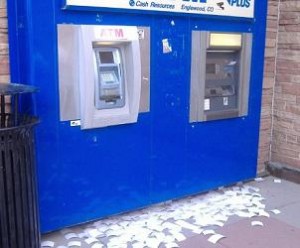While some identity thieves may focus on getting your credit cards and maxing them out before you even realize they're missing, an increasing number are using one piece of information about you -- often a credit card number -- in order to steal your entire identity.
Though many folks worry about keeping their credit card information secure when shopping online, the top methods that identity thieves use to steal personal data are still low-tech.
Watch your personal documents, be careful to whom you give out your data over the phone, and be careful of mail theft.
No one is immune to identity theft, but armed with a little knowledge about how identity thieves operate, and a little common sense, you can stay one step ahead of them.
Thieves don't need your credit card number in order to steal it
Conversely, they don't need your credit card in order to steal your identity. Identity thieves are crafty; sometimes all they need is one piece of information about you and they can easily gain access to the rest. As a result, today it's crucial to lock up important documents at home. Secure birth certificates, MyKad and passports, in a safe deposit box or in a safe hidden at home. And that includes credit cards when not in use.
The non-financial personal information you reveal online is often enough for a thief
Beware of seemingly innocent personal facts that a thief could use to steal your identity. For example, never list your full birth date on Facebook or any other social-networking Web sites. And don't list your home address or telephone number on any Web site you use for personal or business reasons, including job-search sites.Be careful with your snail mail
Follow your billing cycles closely. If a credit card or other bill hasn't arrived, it may mean that an identity thief has gotten hold of your account and changed your billing address. Never place outgoing mail in your post office box or door slot for a carrier to pick up. Anyone can grab it and get your credit card numbers and other financial information. Bring it to the post office yourself.
Review all bank and credit card statements each month, preferably once a week
Watch for charges for less than RM1 or RM2 from unfamiliar companies or individuals. Thieves who are planning to purchase a block of stolen credit card numbers often first test to check that the accounts haven't been canceled by aware customers by sending a small charge through, sometimes for only a few cents. If the first charge succeeds, they'll buy the stolen data and make a much larger charge or purchase. They're guessing, and often correctly, that most cardholders won't notice such a tiny charge. In addition, many of the fraud alerts you can set on your accounts aren't triggered by small dollar amounts. Reviewing your credit report on a regular basis is also a good idea, but usually by the time a fraudulent transaction reaches your credit report, it's too late.
If an ATM or store terminal looks funny, don't use it.
Make sure there is no device attached to any ATM card slot you use.
As a general rule, the mouth of a card receptacle on an ATM machine should be flush with the machine or have only a very slight lip. If it looks or feels different when you swipe your card, or has an extra piece of plastic sticking out from the card slot, it may be a skimmer, an electronic device placed there by thieves that captures your credit card information when you swipe it. If you notice it after you've already inserted your card, you should alert your bank so they can watch for any fraudulent charges to your account.






No comments:
Post a Comment